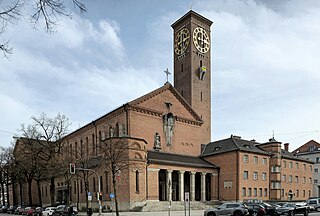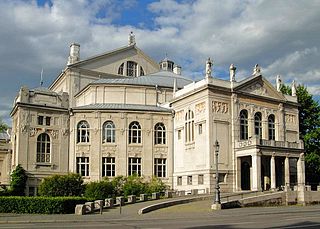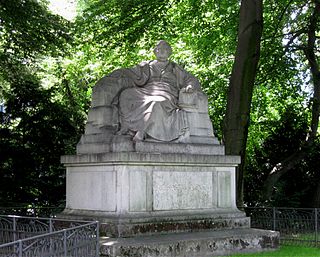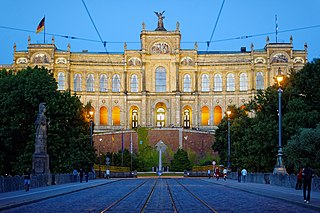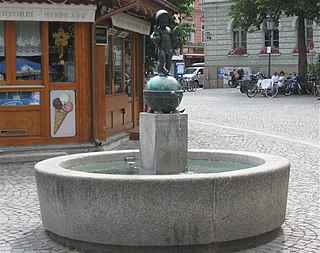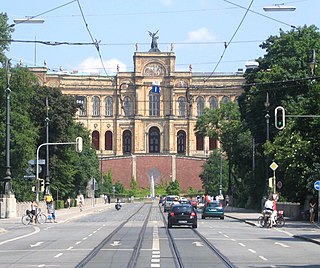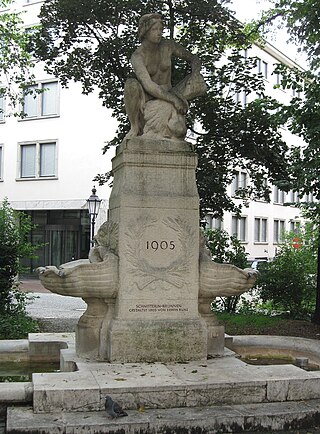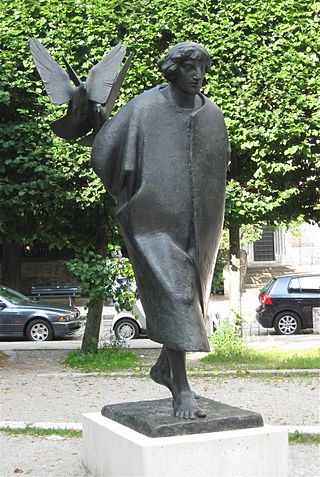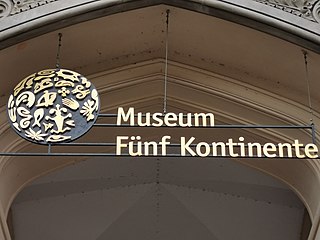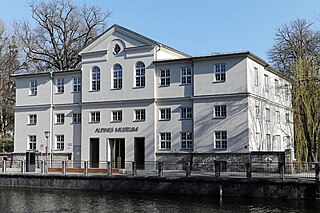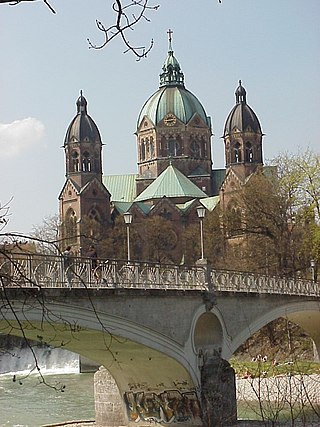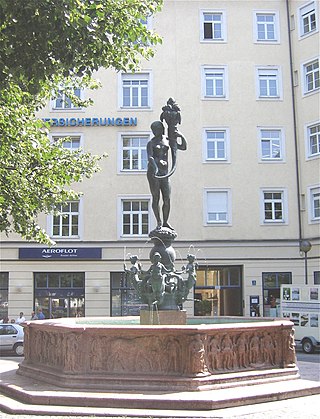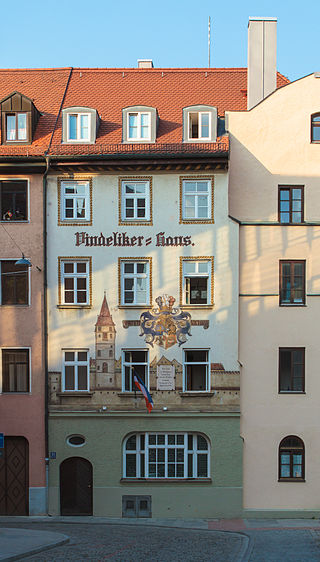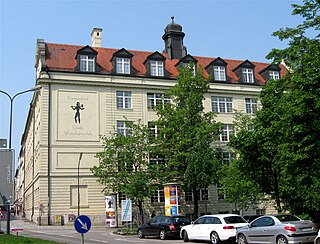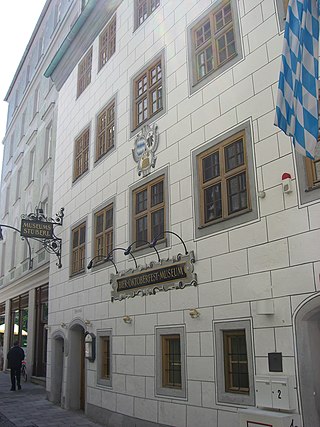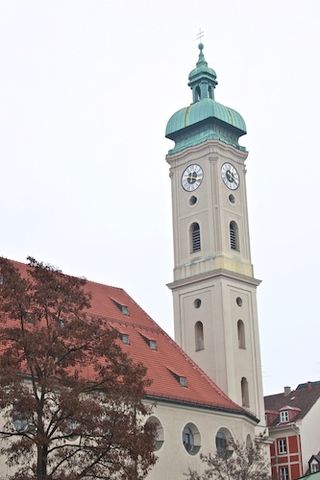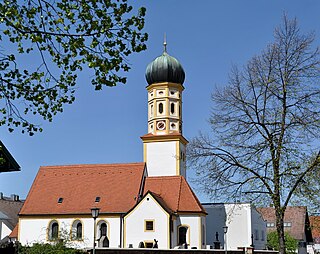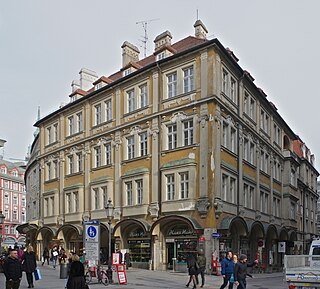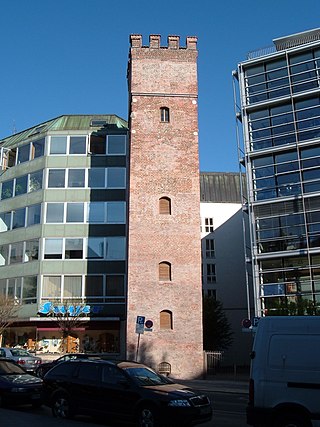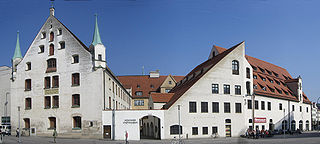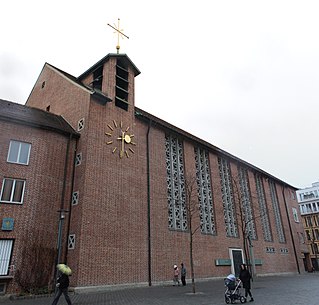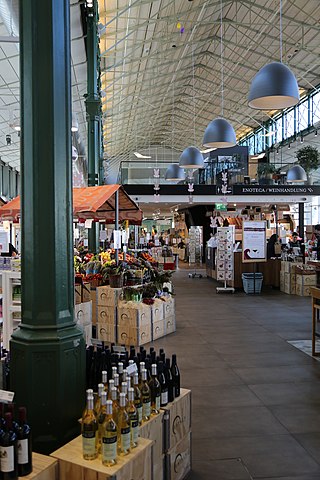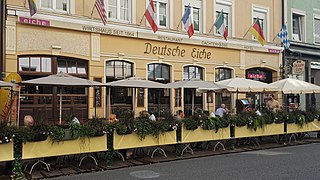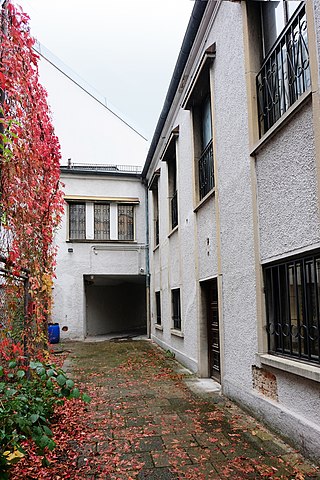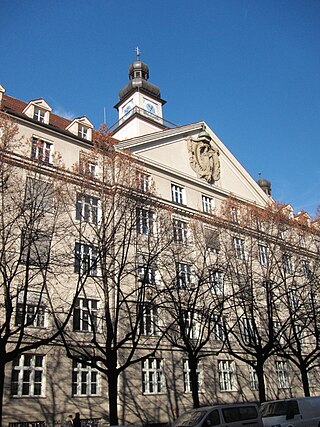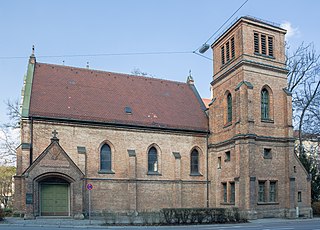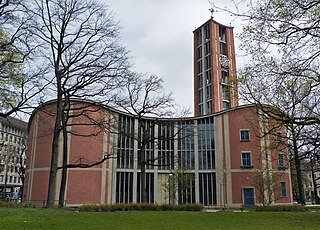Self-guided Sightseeing Tour #8 in Munich, Germany
Legend
Guided Free Walking Tours
Book free guided walking tours in Munich.
Guided Sightseeing Tours
Book guided sightseeing tours and activities in Munich.
Tour Facts
12.6 km
196 m
Experience Munich in Germany in a whole new way with our free self-guided sightseeing tour. This site not only offers you practical information and insider tips, but also a rich variety of activities and sights you shouldn't miss. Whether you love art and culture, want to explore historical sites or simply want to experience the vibrant atmosphere of a lively city - you'll find everything you need for your personal adventure here.
Activities in MunichIndividual Sights in MunichSight 1: St. Gabriel
St. Gabriel is a Catholic parish and monastery church in Munich, Germany.
Sight 2: Prinzregententheater
The Prinzregententheater, or, as it was called in its first decades, the Prinz-Regenten-Theater, in English the Prince Regent Theatre, is a concert hall and opera house on Prinzregentenplatz in the Bavarian capital of Munich, Germany.
Sight 3: Richard Wagner
The Richard Wagner Monument is a monumental seat monument to the composer Richard Wagner created by the sculptor Heinrich Waderé. It is located in a green area on Prinzregentenplatz in Munich's Bogenhausen district between the Prinzregententheater and the Prinzregentenstadion. After a selection from various drafts, it was the turn of the one who shows Richard Wagner in a similar pose to Goethe in his portrait of Goethe in the Campagna.
Sight 4: Maximiliansanlagen
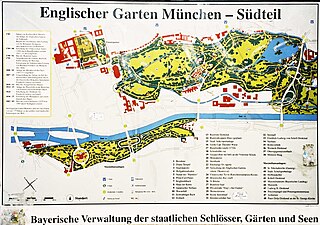
The Maximiliansanlagen are parks and gardens in the Munich districts of Bogenhausen and Haidhausen between the Ludwigsbrücke and the Max-Joseph-Brücke. The central point is the 38-metre-high Angel of Peace. The eastern boundary of the complexes is largely formed by Maria-Theresia-Straße.
Sight 5: Maximilianeum
The Maximilianeum, a palatial building in Munich, was built as the home of a gifted students' foundation but since 1949 has housed the Bavarian State Parliament.
Sight 6: St. Johann Baptist
The parish church of St. John the Baptist is a Roman Catholic church in the Munich district of Haidhausen. It was designed by Matthias Berger on Locust Place in the Gothic Revival style. The west tower is 97 meters high, making it the third highest church in Munich.
Sight 7: Fischerbuberl
The Fischerbuberl Fountain is a fountain on Wiener Platz in Munich-Haidhausen. The fountain, created in 1910 by the sculptor Ignatius Taschner, depicts a naked boy in a hat, standing on a ball, carrying an upward-looking fish in his arms. A third fish is wedged between the boy's feet. The fountain was originally set up in Munich city centre on the Viktualienmarkt next to the Freibank. For the reconstruction of the Schrannenhalle, the fountain had to give way and found a new location in the western corner of Wiener Platz. The current fountain figure is a cast of the original made in 1934.
Sight 8: Maximiliansbrücke
The Maximilian Bridge is an arch bridge over the Isar River in Munich, Germany.
Sight 9: Schnitterin-Brunnen
The Reaper Fountain is a fountain on Thierschplatz in Munich, Germany. It is also called Ceresbrunnen or more rarely Erntebrunnen or formerly after the founder Waitzfelderbrunnen.
Sight 10: Sankt-Anna-Pfarrkirche
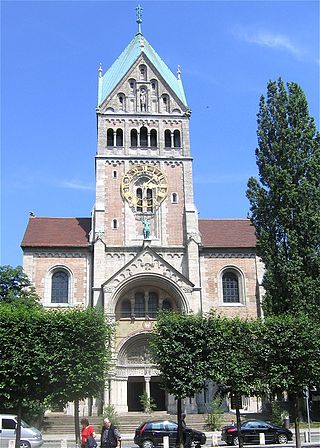
St. Anna im Lehel is a parish of the Roman Catholic Church in the Lehel district of Munich. Founded in 1808, it is staffed by Franciscans from the adjacent abbey of St. Anna.
Sight 11: Franziskus als Friedensbote
Francis as a Messenger of Peace is a sculpture by the sculptor Martin Mayer.
Sight 12: Sankt-Anna-Klosterkirche
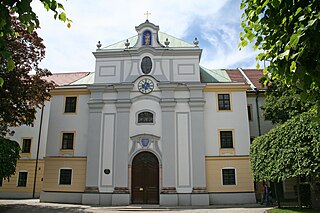
Klosterkirche St. Anna im Lehel is a Catholic abbey church in Munich, Germany. It was the first Rococo church of Old Bavaria and shaped the development of religious architecture in Bavaria. It is located in the center of Lehel opposite to the neo-romanesque Catholic parish church of St. Anna im Lehel.
Sight 13: Regierung von Oberbayern
The building of the Government of Upper Bavaria in Maximilianstraße in Munich houses the Government of Upper Bavaria and the Southern Bavaria Aviation Authority, the aviation authority for the administrative districts of Upper Bavaria, Lower Bavaria and Swabia.
Sight 14: Museum Fünf Kontinente
The Museum Five Continents or Five Continents Museum, located in Munich, Germany, is a museum for non-European artworks and objects of cultural value. Its name until 9 September 2014 was Bavarian State Museum of Ethnology.
Sight 15: Maxmonument
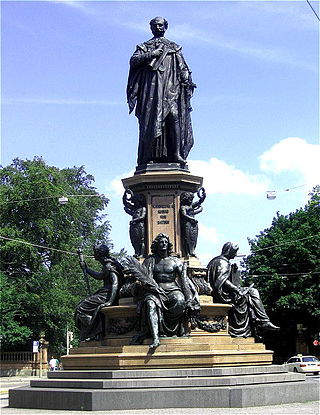
The Max Monument in Munich, also known as the Max II Monument, is a large monument in honor of the Bavarian King Maximilian II. It is located on a traffic island in Maximilianstraße in the Lehel district.
Sight 16: Alpines Museum
The Alpine Museum in Munich is an institution of the German Alpine Club (DAV), a cultural centre with a library, archive and collection on the history of alpinism. It houses the joint Historical Alpine Archive of the German Alpine Club (DAV), the Austrian Alpine Club (ÖAV) and the Alpine Club South Tyrol (AVS). The museum building is the meeting place and event venue of the German Alpine Club with its 355 sections with a total of 1,520,381 members, a place that offers DAV members and the general public the opportunity to exchange ideas on alpine topics.
Sight 17: St. Lukas
St. Luke's Church is the largest Protestant church in Munich, southern Germany. It was built in 1893–96 and designed by Albert Schmidt. It is the only pre-World War II Lutheran parish church building remaining in the historic section of central Munich.
Sight 18: Fortunabrunnen
The Fortuna Fountain is a fountain in the Lehel district of Munich, Germany. It was created in 1907 by the Munich sculptor Karl Killer. The reason for the construction was the redesign of the square in front of the Isartor.
Sight 19: Vindelikerhaus
The Vindelikerhaus is a residential and corporate building at Marienstraße 21 in Munich, Germany. It is registered as an architectural monument in the Bavarian List of Monuments.
Sight 20: Valentin-Karlstadt-Musäum
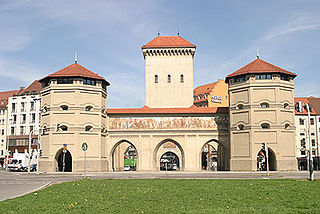
The Valentin-Karlstadt-Musäum is a municipal museum in Munich, Germany, dedicated to the comedian Karl Valentin, his partner Liesl Karlstadt, and Munich folk singers.
Sight 21: Städtische Riemerschmid Wirtschaftsschule München
The Städtische Riemerschmid-Wirtschaftsschule in Munich is a business school for girls. When it was founded as a private institution in 1862 by the liqueur manufacturer Anton Riemerschmid and his authorized signatory Matthias Reischle, it was the first commercial school for girls in Germany. It has been in municipal hands since 1898.
Wikipedia: Städtische Riemerschmid-Wirtschaftsschule München (DE), Website
Sight 22: Bier- und Oktoberfestmuseum
The Beer and Oktoberfest Museum in Munich deals with the history of beer and the Munich Oktoberfest.
Sight 23: Moradellihaus
The Moradellihaus in Munich is a town house from the 17th century. After the destruction of the Second World War, it was reconstructed by Erwin Schleich. The building is registered as an architectural monument in the list of monuments of the Free State of Bavaria.
Sight 24: Heilig Geist
Heilig-Geist-Kirche is a Gothic hall church in Munich, southern Germany, originally belonging to the Hospice of the Holy Ghost.
Sight 25: St. Peter
Get Ticket*St. Peter's Church is a Roman Catholic parish church in the inner city of Munich, southern Germany. Its 91-metre (299 ft) tower is commonly known as "Alter Peter"—Old Peter—and is emblematic of Munich. St Peter's is the oldest recorded parish church in Munich and presumably the originating point for the whole city.
Sight 26: Rindermarktbrunnen
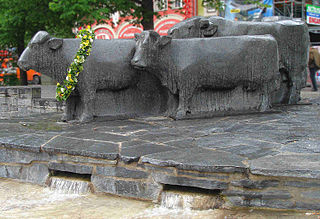
The Rindermarktbrunnen or literally "Cattle market fountain" in English is a modern sculpture in the historical Altstadt of Munich, in Bavaria, Germany. It was created in 1964 by Munich sculptor and professor of the Munich Academy Josef Henselmann in the course of the reorganisation of the cattle market. The fountain was sponsored by Gunther Henle.
Sight 27: Ruffinihaus
The Ruffinihaus is a group of three houses on the Rindermarkt in the Old Town of Munich, Bavaria. It was built by Gabriel von Seidl from 1903 to 1905 and is named after the Ruffiniturm, which in turn was named after Johann Baptista Ruffini. The Ruffiniturm formed the original Sendlinger Tor and thus was part of Munich's first city wall.
Sight 28: Löwenturm
The Löwenturm at Rindermarkt in Munich's old town is an approx. 25-metre-high seven-storey brick tower from the 14th century. It is a listed building.
Sight 29: Orag-Haus
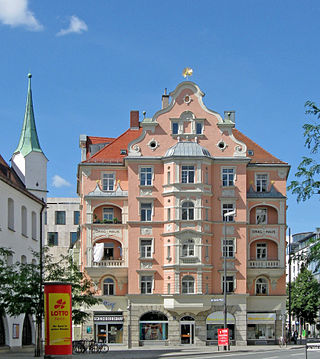
The ORAG-Haus is an administrative building and commercial building in the Angerviertel of Munich's old town.
Sight 30: Münchner Stadtmuseum
The Munich Stadtmuseum or Munich City Museum, is the city museum of Munich. It was founded in 1888 by Ernst von Destouches. It is located in the former municipal arsenal and stables, both buildings of the late Gothic period.
Sight 31: Ohel Jakob synagogue
Ohel Jakob Synagogue is a Jewish congregation and synagogue, located at the Sankt-Jakobs-Platz in Munich, Germany. It was built between 2004 and 2006 as the new main synagogue for the Jewish community in Munich. The synagogue was inaugurated on 9 November 2006 on the 68th anniversary of the Kristallnacht.
Sight 32: Jewish Museum Munich
The Jewish Museum Munich, provides an overview of Munich’s Jewish history and is part of the city's new Jewish Center located at Sankt-Jakobs-Platz in Munich, Germany. It is situated between the main synagogue Ohel Jakob and the Jewish Community Center which is home to the Jewish Community of Munich and Upper Bavaria and houses a public elementary school, a kindergarten, a youth center as well as a community auditorium and a kosher restaurant. The museum was built from 2004 until its inauguration on March 22, 2007 and is run by the city of Munich.
Sight 33: St. Jakob am Anger
Saint James's Church, is a church in Munich. It serves the School Sisters of Our Blessed Lady as a monastery church.
Sight 34: Hochbunker Blumenstraße
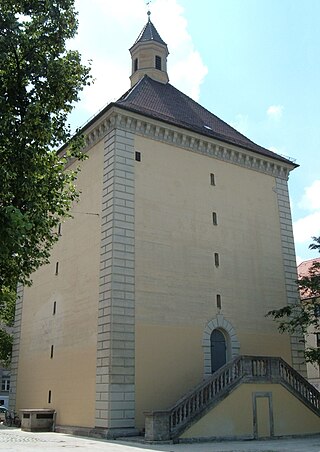
The Blumenstraße bunker, also known as the Blumenbunker, is an above-ground air-raid shelter from the Second World War at Blumenstraße 22 in Munich, Germany. It was built in 1941 according to plans by Karl Meitinger by the municipal building department in the center of the city. The construction took place as part of the Fuehrer Immediate Program, in which Munich was classified as an "air raid shelter of the first order". By the end of the war, 48 bunkers with a similar capacity had been built in Munich. Up to 1,200 people were to find shelter from air raids in the bunker. The then Reich Minister for Armaments and Munitions, Fritz Todt, appeared at the inauguration.
Sight 35: Schrannenhalle
The Schrannenhalle in Munich was built from 1851 to 1853 by Karl Muffat as a grain hall on the edge of the old town near the Viktualienmarkt. It was the first building in iron construction in Munich. The official name was Maximilians-Getreide-Halle, the popular Schranne at that time referred to a grain market.
Sight 36: Deutsche Eiche
The Hotel Deutsche Eiche in Munich's Gärtnerplatz district is an old traditional restaurant. It is considered one of the oldest meeting places of the homosexual scene in Munich.
Sight 37: Klosterkirche Herz Jesu
The Sacred Heart Monastery (Klösterl) of the Niederbronn Sisters is located at Buttermelcherstraße 10 in the Isarvorstadt district of Munich.
Sight 38: Otto Fürst von Bismarck

The Bismarck Monument is a monumental statue in Munich, erected in memory of the former German Chancellor Prince Otto von Bismarck. It was created in 1931 by the Munich sculptor Fritz Behn. The statue shows the statesman in larger-than-life form. In his right hand he holds a sword pointed at the ground. Behn modelled the design in the contemporary monumental style. It was executed in Rochlitz porphyry by the master stonemason Rödl.
Sight 39: Synagoge Reichenbachstraße
The synagogue on Reichenbachstraße Munich is a former synagogue in Munich, Germany. The building is located in the Isarvorstadt near Gärtnerplatz. From 1947 until the opening of the new Ohel Jakob Synagogue in 2007, it was Munich's main synagogue.
Wikipedia: Synagoge an der Reichenbachstraße München (DE), Website
Sight 40: Staatstheater am Gärtnerplatz
The Staatstheater am Gärtnerplatz, commonly called the Gärtnerplatztheater, is an opera house and opera company in Munich. Designed by Franz Michael Reiffenstuel, it opened on 4 November 1865 as the city's second major theatre after the National Theatre.
Sight 41: Angergymnasium
The Theresia-Gerhardinger-Gymnasium am Anger is a girls' grammar school at Blumenstraße 26 in the Angerviertel in Munich under the auspices of the Poor School Sisters of Our Lady. It is a state-recognized grammar school with linguistic, musical and economic branches. The building also houses a primary school for girls, a kindergarten and a student dormitory of the Poor School Sisters.
Sight 42: Städtisches Hochhaus
The Old Technical Town Hall, is a communal service building of the city administration and headquarters of the section for the planning and building regulations of Munich, Bavaria, Germany. It is the oldest high-rise building in Munich and is still referred to as "Das Hochhaus" by old-established Munichers, although there are now more and higher high-rise buildings.
Sight 43: Münchner Marionettentheater
Münchner Marionettentheater is a theatre in Munich, Bavaria, Germany. It is known as the oldest, not-mobil puppetry in the German-speaking countries. It is chaired by puppeteer Siegfried Böhmke since 2000.
Sight 44: St. Willibrord
St. Willibrord in Munich is a church building of the Old Catholic Church. The building is registered as an architectural monument in the Bavarian List of Monuments.
Sight 45: Pfarrkirche St. Matthäus
The Evangelical Lutheran parish church of St. Matthew, also known as St. Matthew's Church, is the most important Protestant church in Munich. The current building, which was built according to plans by Gustav Gsaenger between 1953 and 1957, is the successor to the old St. Matthew's Church, which was built in 1833 in the post-classical style as the first Protestant church in Munich and demolished in 1938. St. Matthäus is a bishop's church of the Evangelical Lutheran Church in Bavaria.
Sight 46: Stephanskirche am Alten Südfriedhof
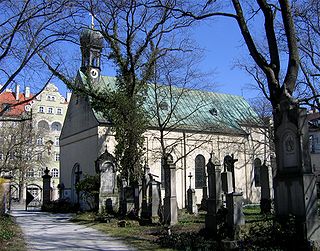
St. Stephan's Church is a former cemetery church of the old South Cemetery in Munich, Germany. It is the chapel of the parish church of St Peter.
Sight 47: Alter Südlicher Friedhof
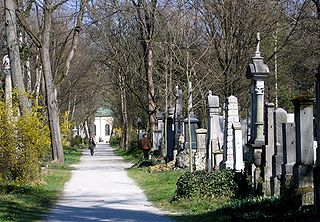
The Alter Südfriedhof also known as "Alter Südlicher Friedhof" is a cemetery in Munich, Germany. It was founded by Duke Albrecht V as a plague cemetery in 1563 about half a kilometer south of the Sendlinger Gate between Thalkirchner and Pestalozzistraße.
Wikipedia: Alter Südfriedhof (EN), Website, Heritage Website
Share
How likely are you to recommend us?
Disclaimer Please be aware of your surroundings and do not enter private property. We are not liable for any damages that occur during the tours.
GPX-Download For navigation apps and GPS devices you can download the tour as a GPX file.
